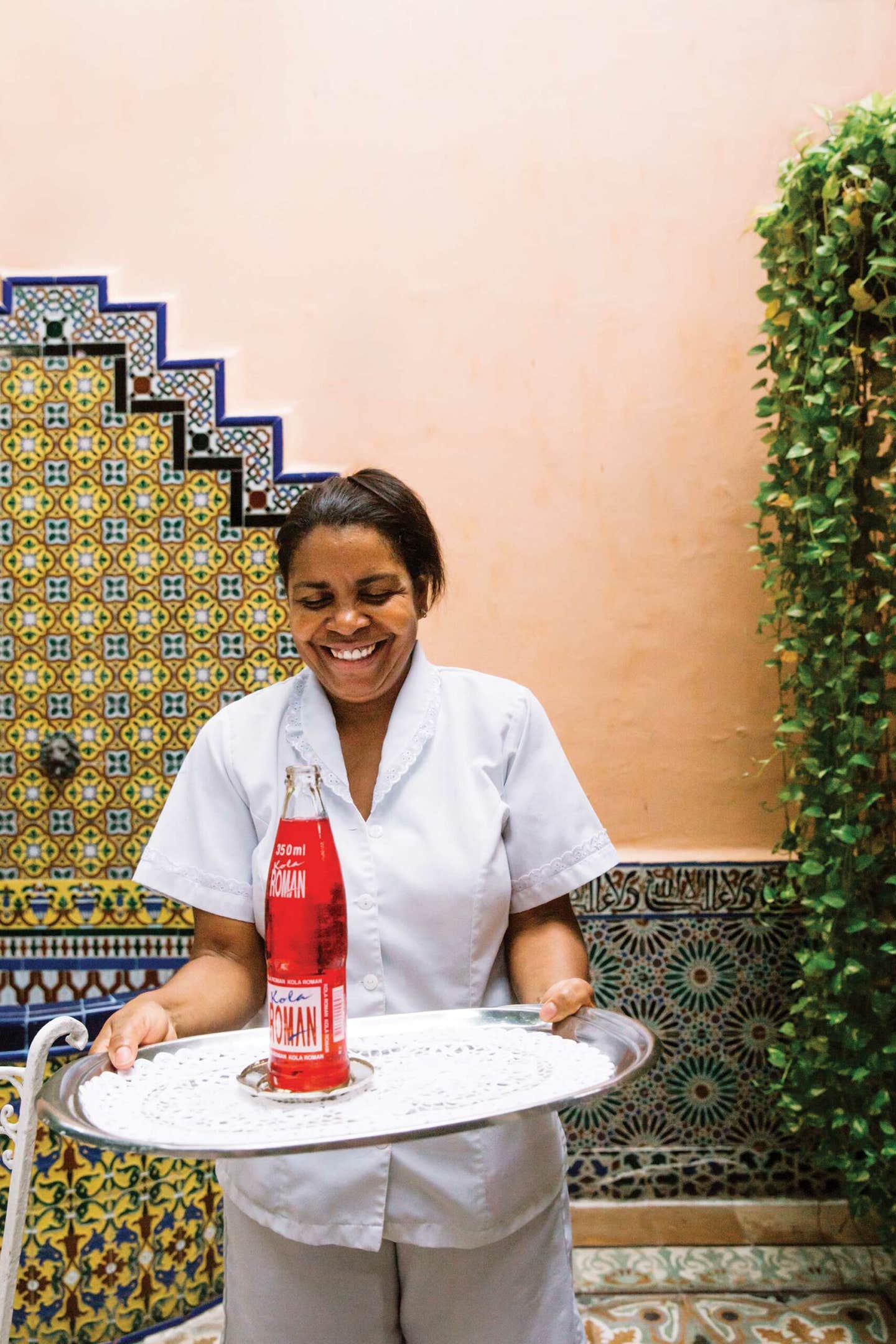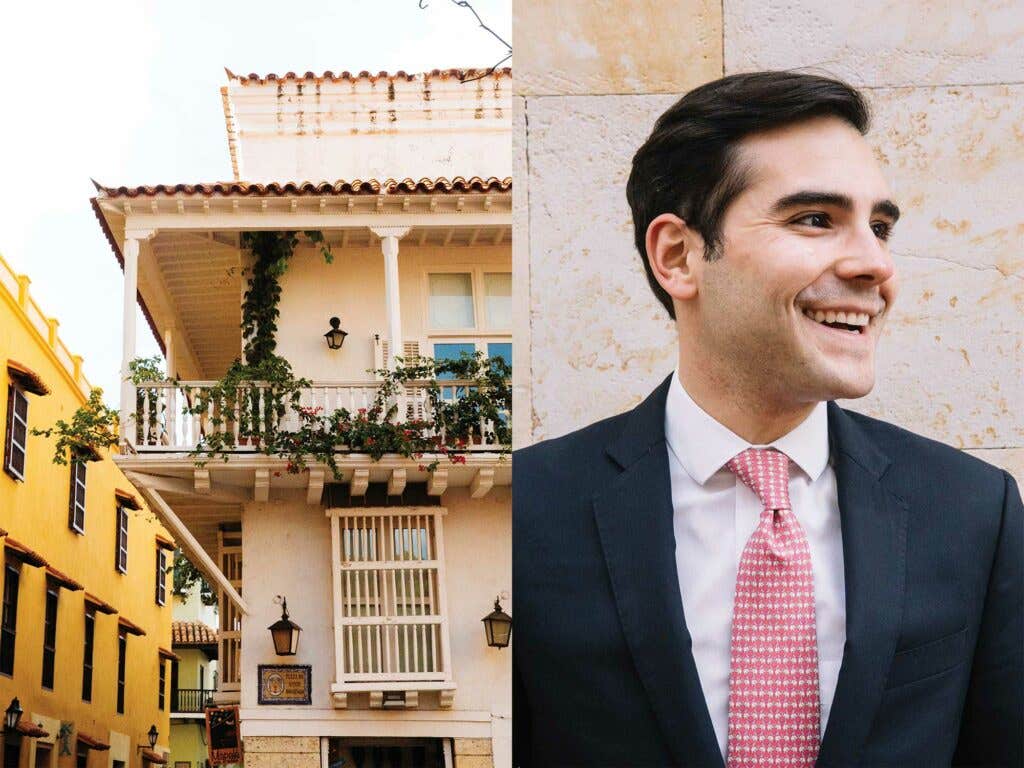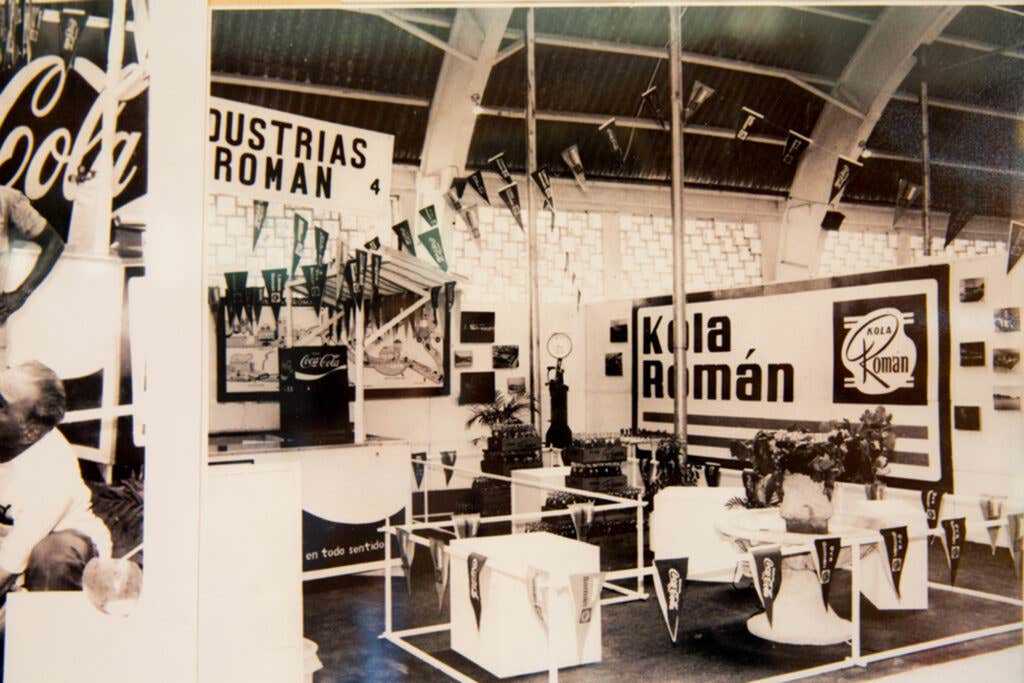
In Cartagena's Old City, heat presses into alleyways and sunlight streams over cobblestones. People move languidly and salty ocean breezes slip past handsome colonial buildings. Ducking the high-noon humidity, city dwellers seek respite in cool bakeries. There is a saying here that goes something like this: "All a man needs are pan y Kola Román."
Bread and Cartagena's beloved, omnipresent soda. Despite its frivolous appearance—tapered glass, flashy logo, crayon-pink hue—Kola Román is deeply embedded in the rituals and identity of Colombia's Caribbean coast.
Watch: A Kola Román Commercial From 1985
“It's become knitted into our society,” says Sergio A. Londoño Zurek, a descendant of the Kola Román founder and the keeper of his family's archives. “This is an important part of our culture, and an important part of Cartagena.”
In 1834, while on his way to Peru, Manuel Román was shipwrecked off the coast of Colombia. Saved by local fishermen, he made his way to Cartagena, where he fell in love and decided to stay. In the colonial city center, Román opened Laboratorio Román, a pharmacy that introduced Colombians to the European fad of flavored carbonated waters around the turn of the 20th century. At the time, soda was considered a remedy meant to heal everything from fatigue to indigestion. The pharmacy sold Dry Kola, ginger ale, and a “champagne” soda called Kola Román, which was originally sourced from the United States. But in 1934, Henrique Román, Manuel's grandson, redeveloped the recipe into the vanilla-flavored soda that today can be found everywhere from beachside stands to high-end restaurants in the Old City.

Here, along the coast, Colombians drink Kola Román straight or mix it with beer in a cocktail called refajo. Some even cook with it in dishes like platanos ententación: plantains simmered in soda with clove and sometimes whole vanilla beans. At Casa Román, the family's lush, Moorish-style mansion, Sergio's mother, Teresa Margarita Zurek Román (Manuel's great-great-granddaughter), cooks a platter of radiant platanos—sticky, salty-sweet tropical comfort food brightened with the vanilla-scented fuchsia fizz. "For me," says Sergio, "this flavor tastes like home."

Keep Reading
Continue to Next Story










